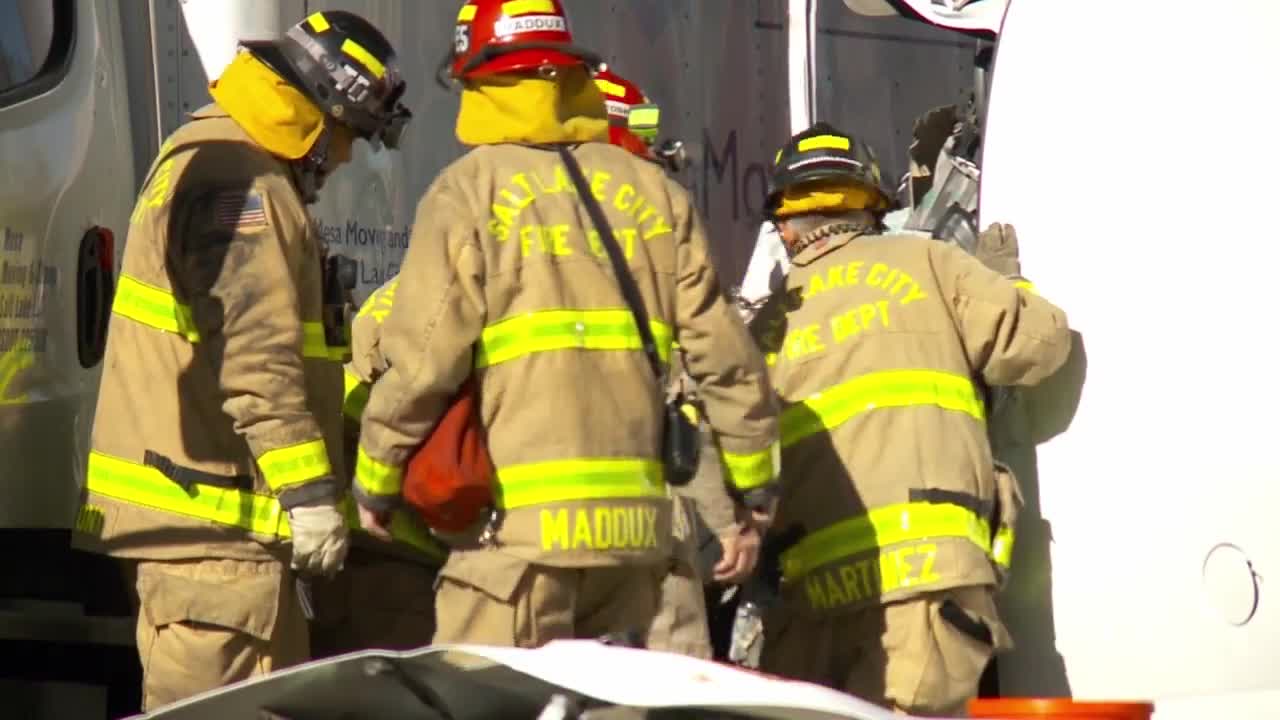SALT LAKE CITY — Salt Lake City Fire Department Captain Cary Turner has seen it all from the front right seat of fire engines and trucks — drivers stopping in the middle of the road, pulling to the left, and some even putting their vehicles in reverse when emergency vehicles approach.
This week is dedicated to bringing awareness to the importance of protecting first responders on the road, and Turner's observations highlight a troubling pattern that puts lives at risk.
For first responders, every second counts when racing to an emergency. "It's extremely frustrating because we want to get there as quickly as possible. We have a goal to get to every call within the city within five minutes," said Bob Silverthorne, Community Relations Division Chief with Salt Lake City Fire Department.
"Whether it be a stroke, a heart attack, a structure fire, so the quicker we can get there, the quicker we can mitigate the emergency," Silverthorne said.
When drivers don't cooperate with first responders on the roads, they're putting other lives at risk. "We see people pull to the left a lot of the times, we see people full-on deer in headlights panic mode, white knuckle on the steering wheel, slam on the brakes, and just kind of freeze, we see people trying to race the fire engine, going in front of us," Silverthorne said.
Lt. Brenchley with the Utah Highway Patrol understands the challenge drivers face. "People see the lights sometimes there's an element of panic," Brenchley said.
When you see an emergency vehicle coming up behind you with lights and sirens, you should always move to the right — even if you're driving in the far left lane. If you're coming up to an intersection, make sure you clear the intersection before pulling to the right, and make your actions known by using a turn signal.
These first responders aren't just local heroes — they're also mothers, fathers, siblings, and friends who shouldn't have to fear for their lives when going to save someone else's.
Lt. Brenchley recalls what happened to him during a snowy commute years ago. "I remember vaguely shutting the door; that's about the last thing I remember. I do remember getting hit, but at the time I didn't know what it was," Brenchley said.
"My thoughts immediately went to my family, and I thought, okay, this is going to be rough," Brenchley said.
Silverthorne points to several factors contributing to dangerous driving around emergency vehicles. "We've got drivers that are distracted, drivers that have earbuds or the music up too high, and lacking situation awareness is a big thing," Silverthorne said.
First responders rely on the community's combined effort to obey the law, so they can do what they do best — because the next life they're rushing to save could be yours.
This story was reported on-air by a journalist and has been converted to this platform with the assistance of AI. Our editorial team verifies all reporting on all platforms for fairness and accuracy.

DRIVEN TO CHANGE




